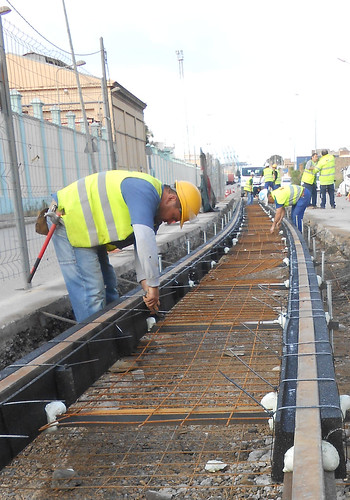World Recycling Day (17 May)
With the aim of making society aware of the importance of protecting the environment, World Recycling Day aims to raise awareness of the need to treat waste in the appropriate way, and so to avoid contributing to climate change. In this regard, COMSA Corporación is committed to the comprehensive management of end-of-life tyres (EOLTs) through the company GMN (Gestión Medioambiental de Neumáticos), which in 2016 carried out the recovery of 18,000 tonnes of EOLTs in its centre in Maials, Lleida.
Tyres are essentially composed of rubber, steel fibres and polymer textile, so it is vital to look for solutions to reduce their environmental impact. Based on a process involving the recovery and treatment of this material, COMSA has developed different R&D&i projects to design innovative solutions in the construction sector, with a special focus on the rail sector.
Outstanding among these is NEOBALLAST, a high performance ballast which has greater durability, requires less maintenance and shows better behaviour in terms of noise and vibrations (N&V). NEOBALLAST involves the application of a special coating containing rubber particles from EOLTs. This achieves a reduction in the noise and vibrations produced by rail traffic, at the same time minimising the environmental impact.
Also carried out in the railway sector, the ECOTRACK project has led to the creation of profiles optimised for the rail jacket which are composed of a selection of granulated SBR (styrene-butadiene rubber) and/or EPDM (ethylene propylene diene monomer) rubber. The main advantage of this product is the reduction of the vibrations and noise, preventing stray currents, electrically insulating the track, and also offering an alternative to fixing at specific points, providing instead continuous support for the track. This solution has been successfully tested on an access track to the Port of Barcelona.
COMSA is also leading other projects in the construction sector. These include ANAGENNISI, which aims to reuse the tyre components to create new materials for the building sector. More specifically, different types of concrete are being developed, including one with confined rubber and steel fibre reinforcement, another which is a high-ductility recycled concrete with rubber and recycled fibre for integral bridges, and another which contains recycled steel fibres that can be used for inclined slabs, prefabricated concrete, floor slabs and shotcrete. This last, mortar-type concrete has already been used in the tunnel of the B-40 in Olesa de Montserrat. The textile fibre waste generated by the EOLTs can also be reused to produce thermal insulation and vibration damping products for buildings.
COMSA’s INSUL-ECO project consists of a panel developed with recycled fibres that has shown good performance in terms of thermal and acoustic insulation. All of these projects are led by COMSA and are supported by the European Commission through prestigious innovation aid programmes such as Horizon 2020, the Seventh Framework Program (FP-7) and Eco-innovation.
GMN has also led and carried out a variety of R&D projects. The most recent has been POWDEROAD, a EUREKA project carried out with the German company PALLMANN and the oil company CEPSA to create a product by developing a technology to make a stable bitumen by modifying this with recycled rubber from EOLTs from cars.
